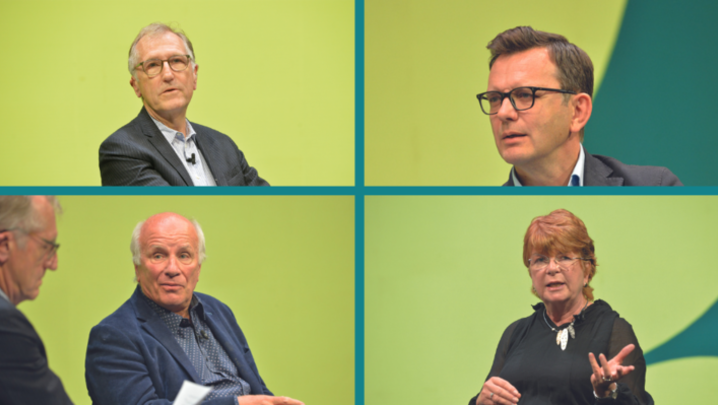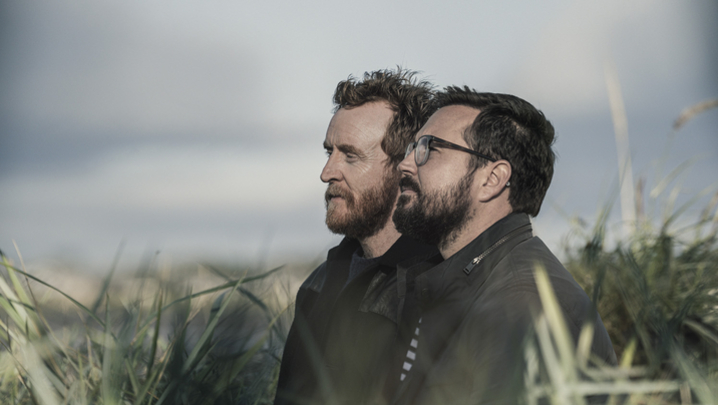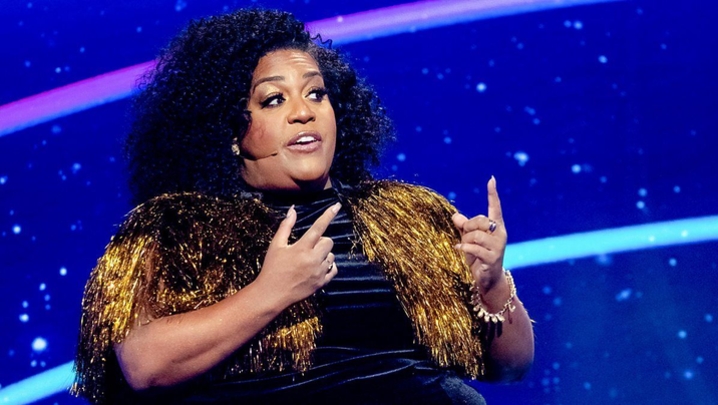BBC One’s adaptation of The Luminaries brings a subversive edge to period drama. Caroline Frost learns how it was
It is a brave screenwriter who takes on the task of squeezing a Booker-prizewinning doorstopper of a novel into six hours of television, even if that writer is the book’s author herself. It took Eleanor Catton seven years to adapt her 2013 novel The Luminaries for the screen (after a relatively brief five years writing the book), and plenty of playing with both form and story that another writer might not have dared.
“If Eleanor hadn’t been involved, I doubt we could have been so subversive,” reflects director Claire McCarthy on filming the 832-page tome, which tells the story of the 1866 gold rush in New Zealand’s South Island, complete with betrayal, brothels and a murder mystery, as well as an “astrological love affair” at its centre.
The first episode of the six-part series led to complaints from viewers who struggled with its opening scenes, shot in near darkness and with little explanation of where they fitted into the complicated timeframe of the story.
But The Luminaries is well worth sticking with – not least for its rich production, stellar performances and the way it avoids many of the clichés of period drama and brings a refreshing, feminist take to what is often portrayed as a macho world.
“Eleanor had to honour the characters, be faithful to historical detail and bring the characters off the page but also to streamline, so that it didn’t feel literary or ponderous,” says McCarthy. “There were lots of things to show, so we had to dance a fine line between playing with narrative and bringing a lot of archetypal ideas, then turning them on their head and asking what they mean to a TV audience.”
Producer Lisa Chatfield agrees that the challenge was immense: “There are jumps in time in the book as well, but it starts with 12 men meeting in a bar. They know a crime has happened and they’re trying to figure out if they are culpable.
“But, as well as being a great writer, Eleanor is an avid, very passionate viewer of television. She realised that the story needed to be told through a key character.”
Enter Anna Wetherell, a mysterious young woman, seemingly drawn straight from the pages of Victorian gothic novels, but brought up to date by the script and relative newcomer Eve Hewson’s rich portrayal.
“She’s not an innocent,” explains McCarthy. “She comes with a past. We may not know all her secrets but we know that she comes to get her hands dirty. She seems like the perfect character to take us into the New Zealand of this era, and be the one to guide us through the mystery of those timelines.”
For Chatfield, keeping Anna’s mystery in both her past history and present decisions was key to avoiding the clichés of every 19th-century fictional courtesan, particularly after Anna falls on hard times. “When she first arrives, Anna is asked, ‘Sent for or sent away?’ and she answers, ‘I sent myself.’ It was a clear decision not to give Anna’s backstory, to have her living in the moment, without context.”
The same goes for the choices we see Anna make, such as her early decision to keep quiet when she realises that her purse has been stolen by her new friend Lydia Wells, played with customary brooding charisma by Eva Green.
“Some people find that really challenging,” agrees Chatfield. “Why doesn’t Anna take her money back and go? But her choices are made of character not plot, without justification. She has no background or context.”
This crucial, demanding role – 17 weeks of shooting, with only five days not on the call sheet – went to Hewson (previously seen in The Knick) after an international trawl.
Chatfield explains what the producers saw: “We met lots of people, with a real mixture of variety and talent. Some brought innocence to it, but Eve really captured the depth.”
At the centre of the adapted tale is Anna’s relationship with Emery Staines, a man she first encounters as they arrive by the same boat in New Zealand. Later, they discover they are “astral twins”, something explained by the spooky Lydia as: “If two people were born at the exact same instance and very near to one another, they would share a destiny.”
For the actor who plays Emery, Himesh Patel – best known for his long-time role of Tamwar Masood in EastEnders before finding new fans in the lead role of Danny Boyle and Richard Curtis’s Beatles big-screen rom-com, Yesterday – this presented the challenge of playing a character who is extremely important but often absent.
As Chatfield puts it, “Emery is like the male embodiment of a traditional girlfriend role. He spends a lot of time away. It’s a tricky role, balancing their romance and connection, but without becoming completely soppy.”
Patel embraced the positivity of his character, explaining: “He’s off-stage, but he’s guiding her. He’s someone who follows his heart. He thinks he’s doing the right thing, then it leads to something tragic and he has to deal with the consequences of that.
“I wanted to know what that does to someone, whether it hardens him, or makes him resolve to do what he does in the end, which perhaps looks like a grand folly from the outside.”
Without giving too much away, the series’ final set piece takes place in a courtroom, with an epic speech from Emery lasting five pages of script and taking days to film. Patel thanks Eleanor Catton’s words for guiding him through. “When lines are easy to remember, it’s a credit to the writer who makes it feel natural. It was a joy to do.”
The Luminaries’ ending is as ambiguous as its beginning for both Emery and Anna, something Patel applauds. “We don’t have a backstory for either of them. I like the fact that we don’t really know who they are, other than this journey we’re going on with them. It was probably true of a lot of people who travelled at that time, leaving something behind.”
Perhaps the show’s greatest, most mysterious character of all is New Zealand itself, from Dunedin on South Island’s east coast to the gold fields of Hokitika on the west. The lack of remaining period architecture in the country meant the whole set had to be built from scratch on farmland outside Auckland with reference to thousands of historical pictures and museum artefacts – and, most treasured of all by McCarthy, visits to Hokitika and a welcome by the local Māori community.
“It felt very important for us to go there, to be in that sacred place with its one river. We wanted to involve people from that community in terms of the tattooing, the carving, the greenstone we used in the film. Then, we had to figure out how to create that world, which is such a part of the story.”
Along with its many other themes, The Luminaries is clearly a love letter to New Zealand from all concerned, something brought home to Patel on his very last day of filming with Māori actor Richard Te Are, who plays greenstone hunter Te Rau.
“Richard did a haka at the end of the shoot. You could tell what it meant to him to be doing that. It was one of the most moving moments of my life. It’s a truly holy place.”






